A great deal of current agricultural research is focused on ensuring sufficient food is available for the world’s growing population.
Farmers are increasingly required to produce more food using the same resources while accounting for rapidly changing climate conditions – factors that continue to increase the pressure on the world’s food supply.
Shifting weather patterns lead to more frequent and severe droughts and floods and unpredictable extremes of hot and cold temperatures. Growing seasons are shorter, and vital resources such as clean water and good soil continue to pose problems.
Scientists are working to develop the technologies and tools designed to facilitate the future of farming.
Spectroscopy is a central enabling technology for a large number of these technologies and tools. Spectroscopy is used everywhere, from innovative research to integration into sensors and analytical tools.
Avantes’ spectroscopy solutions are widely employed and relied upon around the world, delivering proven results in labs, field research outposts and production lines.
Soil Management
Soil is typically a compound mixture of organic matter, gases, liquids, minerals and a number of living organisms.
Beyond its vital role in supporting plant life in the form of crops, the soil is also key to storing, transporting and purifying water. Soil also has a role in helping to modify the atmosphere and as a vital habitat for a range of organisms of varying sizes.
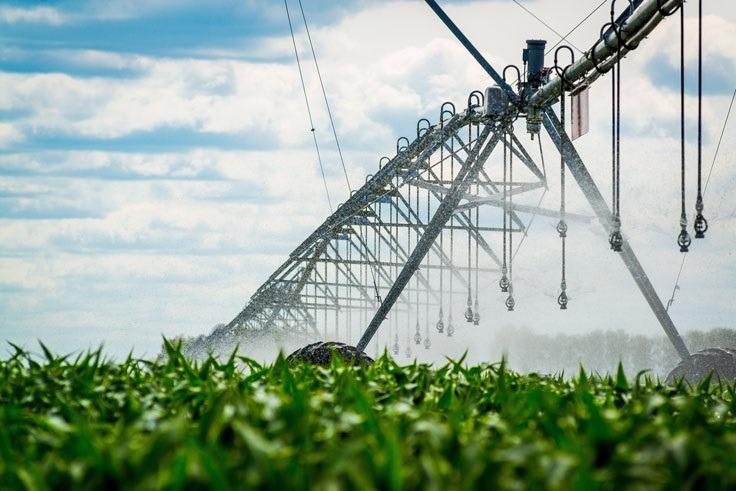
Irrigation systems. Image Credit: Avantes BV
Sustainable soil management is, therefore, vital to ensuring future food production and all life on Earth.
Soil health remains a central facet of sustainable land management for farms of all sizes. Any number of soil health issues can adversely affect crop production and farm viability, including erosion, contamination, loss of biodiversity or soil compaction
Avantes is at the forefront of research and technology development seeking to safeguard future food supplies, supporting the design and implementation of numerous studies and new technologies for analyzing and managing soil health.
Moisture Measurements
Soil moisture measurements have historically involved a tensiometer – a device that employs a gauge and a hollow tube with a porous reservoir of water on top. The device’s tube is inserted into the soil before water is drawn into the soil from the cup. This creates a vacuum that continues until it reaches equilibrium.
By using the gauge, it is possible to acquire a reading based on the vacuum to determine a value that correlates to the soil matrix’s water-carrying potential.
This information enables farmers to ascertain the need for irrigation, but it does have its disadvantages and a limited scale of use. This is because the tensiometer is slow, and it takes time for the water to reach equilibrium.
Researchers had investigated the impact of soil moisture on the visible spectrum as early as 1978. As spectroscopy techniques continued to improve, it became possible to extend these investigations into the near- and mid-infrared.2
By 2014, researchers in Hungary had begun working on calibrating spectral data in order to develop algorithms able to facilitate the rapid, field-scale measurement of soil moisture content.3
It is anticipated that algorithms will one day enable the field-scale deployment of spectroscopy-based moisture measurements, but this process begins in the laboratory with data collection.
Soil samples were acquired from orchards around the region with different soil characteristics. These were kiln-dried in the lab to ensure consistent aridity levels.
Water was slowly reintroduced, with spectra collected at every 2.5 ml until full saturation of the samples was achieved. The researchers identified that the 1450-1460 nm and 1920-1930 nm wavelengths were the most sensitive in terms of soil moisture quantification.
The AvaSpec-NIR256-2.5-HSC-EVO and AvaSpec-NIR256-1.7-EVO can provide sufficient range and sensitivity to enable this type of laboratory-based application.
Future developments in compact NIR spectrometers may allow the tensiometer to be replaced with handheld field instruments able to facilitate the rapid assessment of moisture content.
These instruments will also be suitable for integration with irrigation systems, as well as being able to calibrate and authenticate (ground truth) airborne hyperspectral imaging technology.3
Soil Characterization
Soil is far from a homogenous mixture, typically featuring variations in terms of its mineral and organic matter content and its particle size. These factors can alter any number of soil characteristics.4
Soil type determines processes and outcomes ranging from irrigation schedules to the forms of crops likely to prosper in a given soil. The US Department of Agriculture recognizes 12 different types of soil, ranging from sand to clay.5
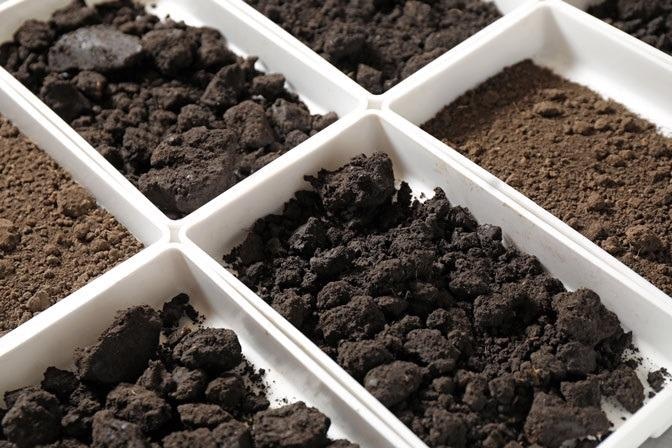
Image Credit: Avantes BV
Each of these soil types features predictable characteristics, such as its color. The most common approach to determining soil type is reliant on highly subjective and comparatively unreliable personal experience, comparing the soil sample against a specially designed color chart provided by the Munsell Corporation.2
Other approaches to soil classification include the use of complex, time-consuming chemical processes that require specialized technical skills and could negatively impact data interpretation.3
Optical spectral sampling represents a more viable option since this requires little or no sample preparation and does not require the use of harsh chemicals. It is also possible to analyze several parameters from the same spectral data using this method.
In Hamadan, Iran, researchers explored the use of UV/VIS/NIR spectroscopy to analyze a number of soil parameters, including pH, color, electrical conductivity, moisture content, total nitrogen, available organic carbon and exchangeable cations.
They also used this approach as a means of identifying a wide range of minerals, including iron, titanium oxides, magnesium, potassium, calcium and sodium.3
This research saw samples being collected, randomized and kiln-dried before being ground, sieved and split into calibration and validation sets.
A full set of chemometric data was collected from the validation sample set, with an average of 24 broadband spectral scans acquired per sample in the calibration set.
This was done by using the spectrometer to cover the UV-VIS range from 200-1100 nm at 1 nm resolution, while the 1000-2400 nm range facilitated measurements in the NIR.
By performing spectral analysis on the calibration set, it was possible to perform a series of statistical analysis operations based on principal component analysis (PCA) and least partial squares regression analysis (LPS-R). his allowed the researchers to link their acquired spectral reflectance measurements to observable soil properties.
Using these results, the researchers determined that they could confidently validate soil classification with a small subset of the available variables.
Bulk Density and Soil Compaction
Soil compaction is the term given to the compression of spaces between soil particles. These spaces would typically hold air or water, and soil compaction leads to issues such as poor root development and oxygen deficiency, which ultimately reduce crop yields and quality.
Compaction can be the result of natural or human-made processes, but it remains a serious environmental and agricultural problem in either case.1
Common causes of soil compaction include the presence of large animal populations, the ongoing use of heavy machinery, or repeated plowing to a uniform depth.
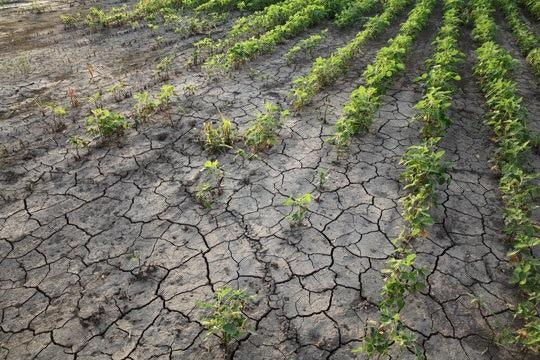
Effects of soil compaction. Image Credit: Avantes BV
It is essential that sustainable agricultural systems effectively manage soil compaction. The measurement of key parameters linked to soil compaction is a vital part of this management.
Bulk soil density (BD) is the ratio of volumetric moisture (Θv) content to gravimetric moisture (ω). This is expressed as BD = Θv/ω. This parameter is positively correlated with soil compaction, meaning that higher soil density results in a greater level of compaction.1
The penetrometer is the industry-standard technology for measuring soil compaction. This instrument has not evolved beyond a pointed stick designed to mimic a growing plant root. The penetrometer features a pressure gauge on top of a graduated driving shaft that has been tipped with a wider 30-degree stainless steel cone.
Research published in the Computers and Electronics in Agriculture journal in 2018 showcased a prototype measuring system that combines a conventional penetrometer and a fiber-coupled NIRS sensor.1
The system was designed to function in situ, leveraging soil penetration resistance measurements, the use of frequency-domain reflectometry to analyze volumetric moisture content, and near-infrared diffuse reflectance the measure gravimetric moisture content.
These measurements facilitate the calculation of bulk density (BD) using a single, easy-to-manage probe system.1 Its novel probe design included a penetrometer designed to measure soil penetration resistance.
This features a hollow shaft housing optical fibers linked at one end to a sapphire window in the shaft body and linked to 20-Watt halogen lamp for input at the other. The fibers are also linked to the AvaSpec-NIR256-2.5-HSC-EVO spectrometer to enable NIR reflection data output and capture.
Time-domain reflectometry measurements provide a means of quantifying volumetric moisture content (Θv). This is done by integrating an electrode into the probe’s shaft in the form of a copper ring that has been insulated from the probe body.
Using this approach, it was possible to perform hundreds of measurements. These were used to train an artificial neural network (ANN) able to model the fusion of data, producing promising results which could feed into future bulk density solutions for rapid results in field applications.1
Avantes’ Contribution to the Field
There are a number of challenges when seeking to meet the need for affordable, efficient and reliable data. Available systems are often unsuitable for field deployment or operator errors or inconsistencies may compromise data collection.
A large portion of the focus lies in eliminating opportunities for inconsistencies and user errors, mainly when designing all-in-one spectroscopy-based solutions.2
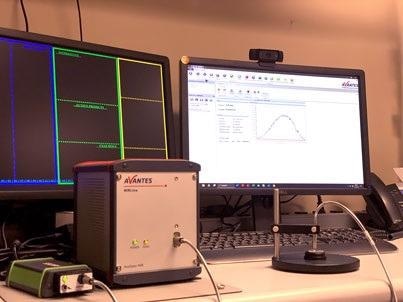
NIR spectroscopy in the laboratory. Image Credit: Avantes BV
Working in close collaboration with an experienced spectroscopy partner can support the discovery and development of solutions to meet these field deployment challenges.
Avantes boasts 25 years’ experience working alongside both researchers and equipment manufacturers to design and develop systems able to meet and confidently exceed measurement requirements.
References
- Al-Asadi, Raed A., and Abdul M. Mouazen. ‘A Prototype Measuring System of Soil Bulk Density with Combined Frequency Domain Reflectometry and Visible and Near Infrared Spectroscopy.’ Computers and Electronics in Agriculture. Elsevier, 30 June 2018. Web. 19 Nov. 2019. https://www.sciencedirect.com/science/article/pii/S0168169917316277
- Han, Pengcheng, et al. ‘A Smartphone-Based Soil Colour Sensor: For Soil Type Classification.” Computers and Electronics in Agriculture, vol. 123, 2016, pp. 232–241., doi:10.1016/j.compag.2016.02.024. https://www.sciencedirect.com/science/article/pii/S0168169916300618
- Monavar, Hosna Mohamdi. ‘34th International Conference on Food and Agricultural Engineering.’ The Ires, Determination of Several Soil Properties Based on Ultra-Violet, Visible, and near-Infrared Reflectance Spectroscopy, 12 Mar. 2016, https://www.researchgate.net/publication/297322303_Determination_of_several_soil_properties_based_on_ultra-violet_visible_and_near-znfrared_reflectance_spectroscopy ‘Soil.’ Wikipedia, Wikimedia Foundation, en.wikipedia.org/wiki/Soil.
- ‘Soil.’ Wikipedia, Wikimedia Foundation, https://en.wikipedia.org/wiki/Soil .
- USDA ‘Natural Resources Conservation Service.’ The Color of Soil | NRCS Soils, US Department of Agriculture, https://www.nrcs.usda.gov/wps/portal/nrcs/detail/soils/edu/?cid=nrcs142p2_054286
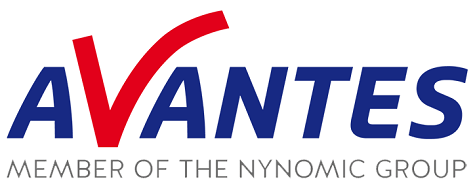
This information has been sourced, reviewed and adapted from materials provided by Avantes BV.
For more information on this source, please visit Avantes BV.